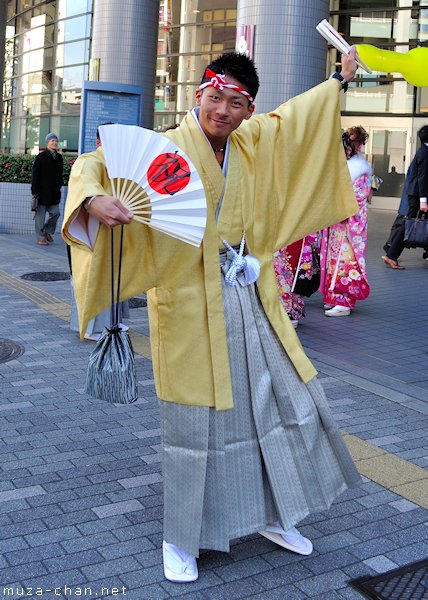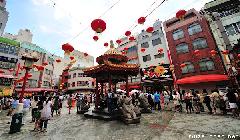Originally, the samurai were wearing hakama only when riding the horse, because it was meant to protect their legs, like the chaps worn by the cowboys. But in time, the hakama became a symbol of the samurai class and even today, its design reflects the samurai philosophy: the number of pleats is always seven, five in the front and two in the back, and this number was selected to express the seven virtues of the samurai code, bushidō (Yuki - courage, Jin - humanity and benevolence, Gi - justice and righteousness, Rei - respect, Makoto - sincerity, Chugi - loyalty and Meiyo - honor). Even more interesting is the fact than the asymmetrically 5 pleas from the front are always placed three on the right and two on the left, a good example of Japanese aesthetics.
After the disappearance of the samurai class, hakama remained a symbol of special occasions, being worn by martial artists and by people participating at tea ceremonies, weddings or public events - like the boy in this photo, who proudly posed for me at the Coming of Age Day ceremony.
EXIF Info:
|
Yesterday’s Japan Photo:Long restaurant queue |



